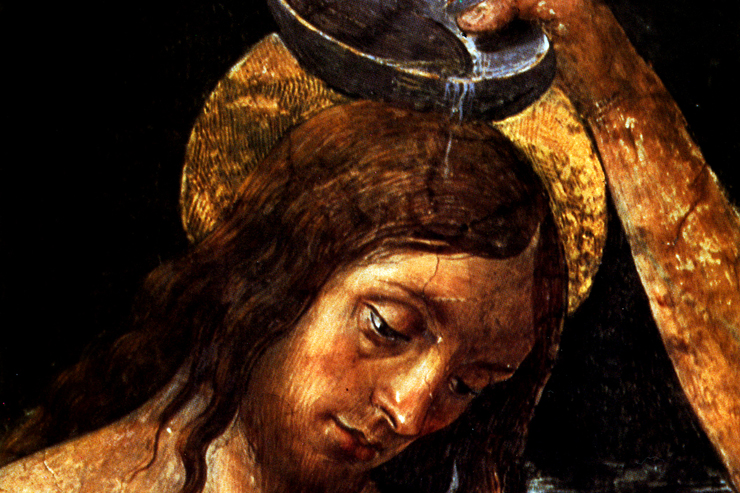
Photography by Andy Coan
In my family there were certain forbidden topics, and one of them was death. If anyone mentioned cemeteries, funerals or hearses, my mother would be sure to say, “Stop being so morbid!”
Of course, my family wasn’t alone. Most of us get uneasy when the word death is mentioned, and we may harbor a deep, unspoken hope that we will somehow escape its clutches.
That’s why I really like All Souls’ Day. It’s a refreshing reminder of all the people we’ve loved who have gone through the door that many would like to keep shut. It’s the passageway to the next world, of course—and we all must go through it.
All Souls’ Day on Nov. 2 reminds us that even after we go through that door, we will not be abandoned by our earthly friends. We trust they will pray for us and have Masses celebrated in our memory.
Some people in my family are Protestants, however, and they claim I’m wasting my time praying for the dead, whether on All Souls’ Day or any other time. Most Protestants believe that if someone professes faith in Jesus, that person is automatically “saved.” Which means the person has a “go straight to heaven” card in the big Monopoly game of life. This explains why, at a Protestant funeral, you’ll hear the preacher assuring the congregation that Aunt Sue is definitely in heaven.
However, the early Christians had a different take on the matter. You see, they didn’t believe that professing faith in Jesus was enough to get someone into heaven, so they offered prayers for the dead. All these years later, Roman Catholics continue that tradition, acknowledging that even if Aunt Sue believed in Jesus, her soul still may need cleansing in purgatory before she meets God face to face. As the Catholic Catechism assures us, since the dawn of Christianity, “the Church has honored the memory of the dead and offered prayers (for) them, above all the Eucharistic sacrifice….”
And if anyone is seeking biblical proof of why we pray for the dead, one passage is found in the second Book of Maccabees. There, a man is described as making “atonement for the dead, that they might be delivered from their sin” (12:46). St. John Chrysostom encouraged the practice by saying we shouldn’t hesitate “to help those who have died and to offer our prayers for them.”
Praying connects the living and the dearly departed in a tangible way. In life, a husband may have brought flowers to an ailing wife. Now that she’s gone, he needn’t be empty-handed. He can kneel down in church with rosary beads in hand and pray for her. In life, a wife may have sacrificed hours of her time cooking special meals for her husband. Now that he’s gone, she can show her love by prayers and fasting.
Catholics pray for the dead all year long, but All Souls’ Day is special. In many parishes, the names of loved ones who have died in the past year are read aloud during Mass. People from some cultures dispense with the usual misgivings about cemeteries (“They’re creepy!” “It’s morbid to talk about them”) and do something truly startling: They pack a picnic basket and head to the cemetery, where they enjoy a festive lunch near their relatives’ graves.
All the rituals of All Souls’ Day present a powerful way to laugh in the face of death while proclaiming a belief in the Resurrection. After all, why would we pray for the dead, if we didn’t believe they still exist? And why should we fear death, since we know that Christ promised us eternal life?
In the past year, my family has lost three people. Our church family at St. Thomas More has said good-bye to far more, of course. But All Souls’ Day reminds us that no one is really lost to us. And so Catholics continue to pray for the dead, just as we did when they were living. We do whatever we can to help the faithful departed as they journey toward that moment when they will, hopefully, look into the eyes of God.
Mrs. Murray’s latest book is “Death of a Liturgist,” a fun-filled mystery featuring murder and mayhem in a Georgia parish. She also is the author of “The Abbess of Andalusia,” a spiritual biography of Flannery O’Connor, and five other books. Her website is www.lorrainevmurray.com













